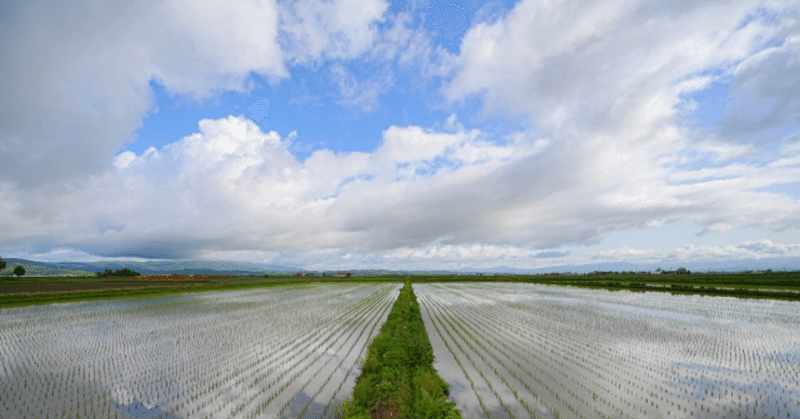
【Koyomi】 May 9, 2024
Today, I want to explore the fascinating world of rice planting, an integral activity for many farmers worldwide.
今日は、世界中の多くの農家にとって不可欠な活動である稲の植え付けについて掘り下げていきたいと思います。
Understanding the Transplantation Method
Rice cultivation often utilizes the paddy field system known as 'wet rice farming'. Most farmers engage in transplanting, where seedlings grown from seeds are moved to paddy fields. This process, widely referred to as 'rice planting', varies by region, but it typically occurs between May and June.
移植栽培法の理解
「水稲」として知られる田んぼを利用した稲作が一般的です。ほとんどの農家では、種から育てた苗を田んぼに移植する「移植栽培」を行っています。この作業は地域によって異なりますが、一般的に5月から6月にかけて行われます。
The Importance of 'Shirokaki
‘Shirokaki' involves burying any weeds that have started growing on the soil surface into the mud. This preparation step is crucial as it helps rice seedlings outpace the growth of weeds after planting. Depending on the soil quality, the fields are ready for planting one day after 'Shirokaki'.
「代掻き」の重要性
「代掻き」とは、土の表面に生え始めた雑草を泥の中に埋め込む作業です。この準備は、植え付け後に稲の苗が雑草の成長を上回るのを助けるために重要です。土の質にもよりますが、代掻き後1日で田植えが可能です。
Managing Water Levels Post-Planting
Immediately after planting, it is essential to maintain a deeper water level to protect the seedlings from abrupt weather changes. However, prolonged deep water can hinder root development and early growth, leading to shallow water management once the seedlings have established.
植え付け後の水管理
田植え直後は、苗を急激な環境変化から守るために、苗の葉先が少し見える程度の深い水深を維持することが重要です。しかし、深水を長引かせると根の発達や分けつの発生が悪くなり、苗の活着後は浅水管理に切り替えます。
この記事が気に入ったらサポートをしてみませんか?
